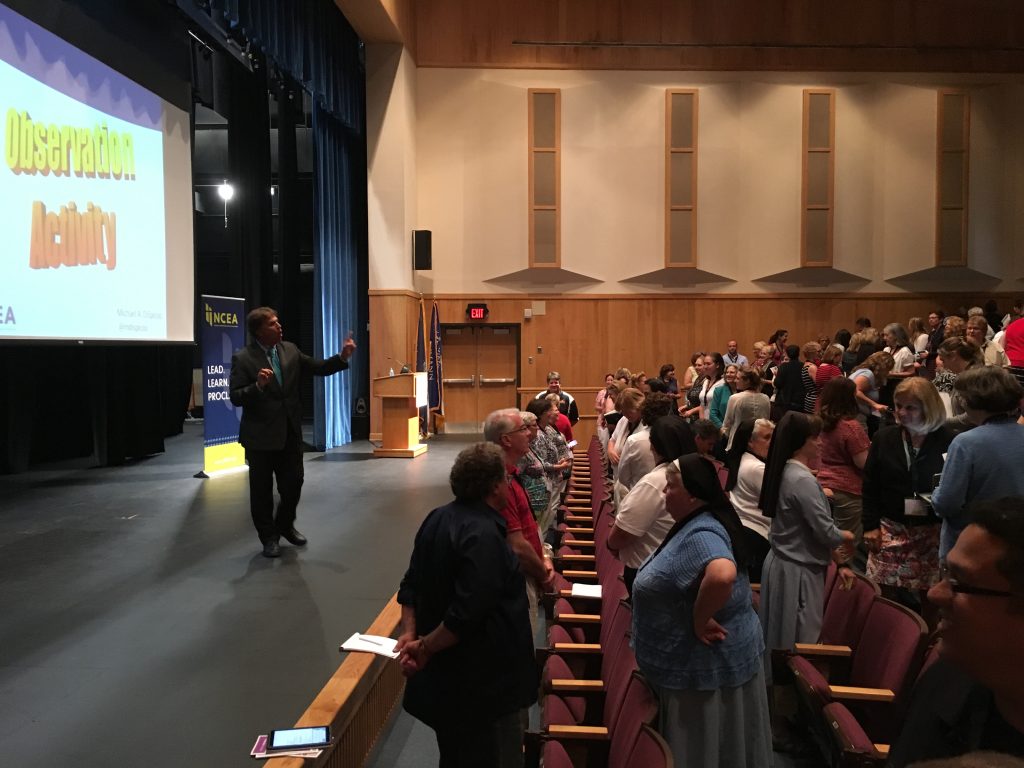This article was contributed by Andrea Kopp, NCEA Educational Resource Manager.

The NCEA STREAM 2.0 Symposium continues this week with great enthusiasm. The Tuesday General Session was led by globally recognized speaker, and co-author of the Houghton Mifflin Harcourt Science Fusion Series, Michael DiSpezio.
Michael led the 240 attendees in a series of energetic, fast-paced activities during his keynote session on Brain Based Learning. He began by explaining some basics of brain anatomy and function and how memory and cognitive development relate to learning. Michael discussed the importance of understanding brain based learning so teachers can use every possible tool in their arsenal to reach students.
DiSpezio explained that there are critical windows of time for certain types of brain connections and learning. He said, “Neurons which fire together, wire together.” Human brains efficiently discard unused or inactive information. He went on to discuss how activation of both sides of the brain challenges learners in a more complex way.
Michael used a series of optical illusions and real-world examples to demonstrate how educators can use brain based learning to enhance their own learning and teaching. Attendees made paper helicopters, played games and conducted experiments as part of the standing-room-only presentation. Dennis Pelletier from St. John the Evangelist Catholic School in Brunswick Maine stated,
He was inspirational! I felt the topic was appropriate for all levels of educators. His presentations are more than a resource, they stayed with me and kept me thinking.
Many thanks to Houghton Mifflin Harcourt for sponsoring Michael’s presence at the event! You can follow Michael on twitter at @mdispezio